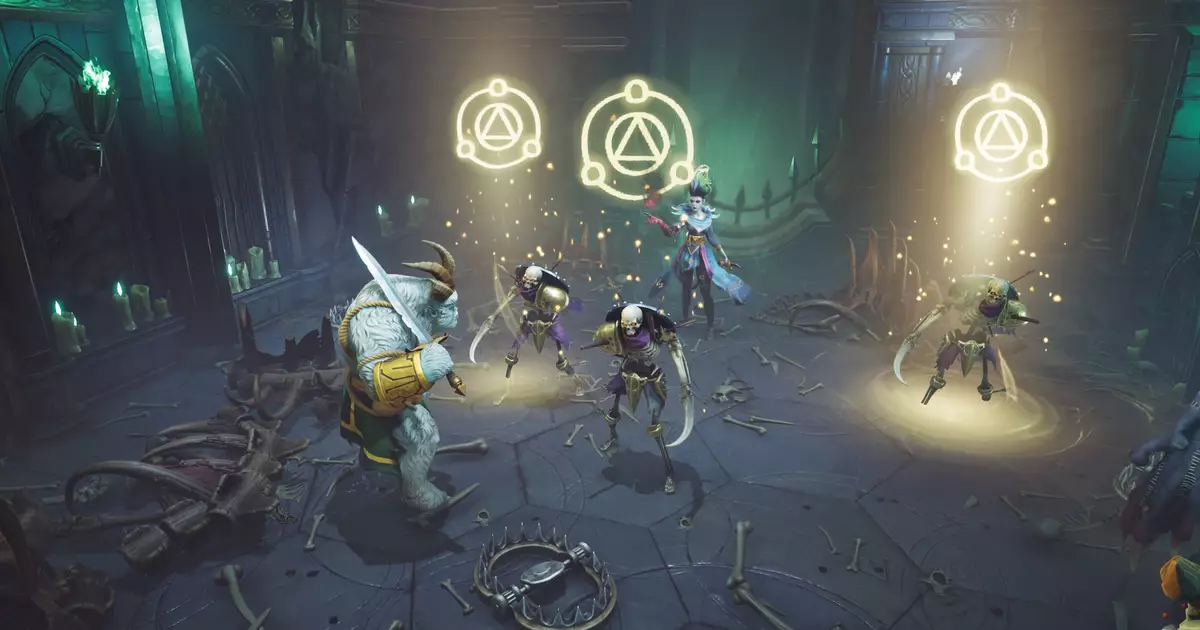The gaming industry has been leaning heavily on adaptations, with board games making their way into the digital realm more frequently than ever. One of the most anticipated transitions is that of Frosthaven, a follow-up to the celebrated Gloomhaven. A product of Cephalofair Games and brought to life in the digital format by Julian Gollop’s Snapshot Games, Frosthaven promises to expand upon its predecessor’s already rich tapestry. With a closed beta set to commence on March 27 and Steam early access slated for later this year, fans are buzzing with anticipation.
It’s not just Gloomhaven’s intricate tactical RPG mechanics that are making the leap. Frosthaven is introducing innovative features, including a comprehensive management system that requires players to build and safeguard a thriving outpost against the torments of winter and invading forces. This new layer adds depth to an already complex game, allowing players to invest time in strategy beyond conventional dungeon crawling.
A Deep Dive into Game Mechanics
From the outset, Gloomhaven dazzled players with its tactical card combat. Frosthaven brilliantly retains this core mechanic, but with added intricacies. Players still navigate through a hand of cards that dictate movement and spellwork, chosen from a customizable deck. The tension arises not only from combat but also from the initiative system, where players must evaluate risks and project potential outcomes. Should you push your luck with advanced plays, or revert to basic attacks for safety?
This mechanic was a standout in Gloomhaven, offering a more strategic layer where players aren’t merely responding to threats but are calculating their maneuvers. The complexity is akin to having a well-crafted puzzle that requires mental acuity—a hallmark of what one would expect from a great tactical RPG.
Moreover, the game gives players the option to recover spent cards by resting, but this comes with the trade-off of burning others. This relationship between card management and risk-reward creates a rich fabric of decisions that keeps players engrossed, fostered by strong character roles that breathe life into their adventures.
Cohesion Between Digital and Tabletop
What truly excites me about Frosthaven’s digital adaptation is the involvement of designer Isaac Childres throughout its development. His vision for Gloomhaven’s universe translates beautifully into the digital domain, with a keen focus on ensuring the game feels organic and immersive.
As a case in point, during a preview session led by Director Hristo Petkov, we learned of the thoughtful reanimation of characters like Snowdancer, whose elegant style of combat was reimagined from Capoeira to a more ballet-like grace based on Childres’s feedback. This level of meticulous attention to detail enhances storytelling, and the very gaming experience, allowing players to explore new environments such as the unique Metallic Ruins, which was previously enveloped solely in narrative within the board game.
Accessibility and Learning Features
For those new to tactical RPGs or the Gloomhaven universe, Frosthaven aims to be more welcoming than its predecessor. The team has worked on enhancing the tutorial complexities, providing a more robust onboarding experience that caters to various player abilities. Childres’s influence ensures that this isn’t just a barrier but an invitation to delve deeper into the rich world without feeling overwhelming.
Accessibility goes beyond just tutorials; Snapshot Games is keen on implementing granular difficulty settings, allowing gamers to customize their experience further. These features could make the game more inclusive, catering to a broader audience while still offering seasoned veterans the challenge they crave.
Player Interaction and Community Building
In today’s gaming landscape, multiplayer experiences are more significant than ever, and Frosthaven is tapping into this trend with 2-4 player cooperative gameplay. The social aspect adds a new dimension, turning the game into an endeavor where camaraderie and strategy intertwine. Friends can collaborate, sharing tactics and executing daring insights—from managing their outpost to venturing out on quests.
What strikes me as particularly compelling is how this cooperative element aligns with the game’s focus on story-rich narratives. This will likely lead to emergent gameplay experiences that not only enrich individual narratives but also create lasting memories among friends.
The excitement surrounding Frosthaven’s digital adaptation speaks volumes about the enduring appeal of tactical RPGs. With its unique mechanics, enhanced community features, and Childres’s hands-on approach, the game is poised to offer a rejuvenated experience that could set a new standard in the genre.

